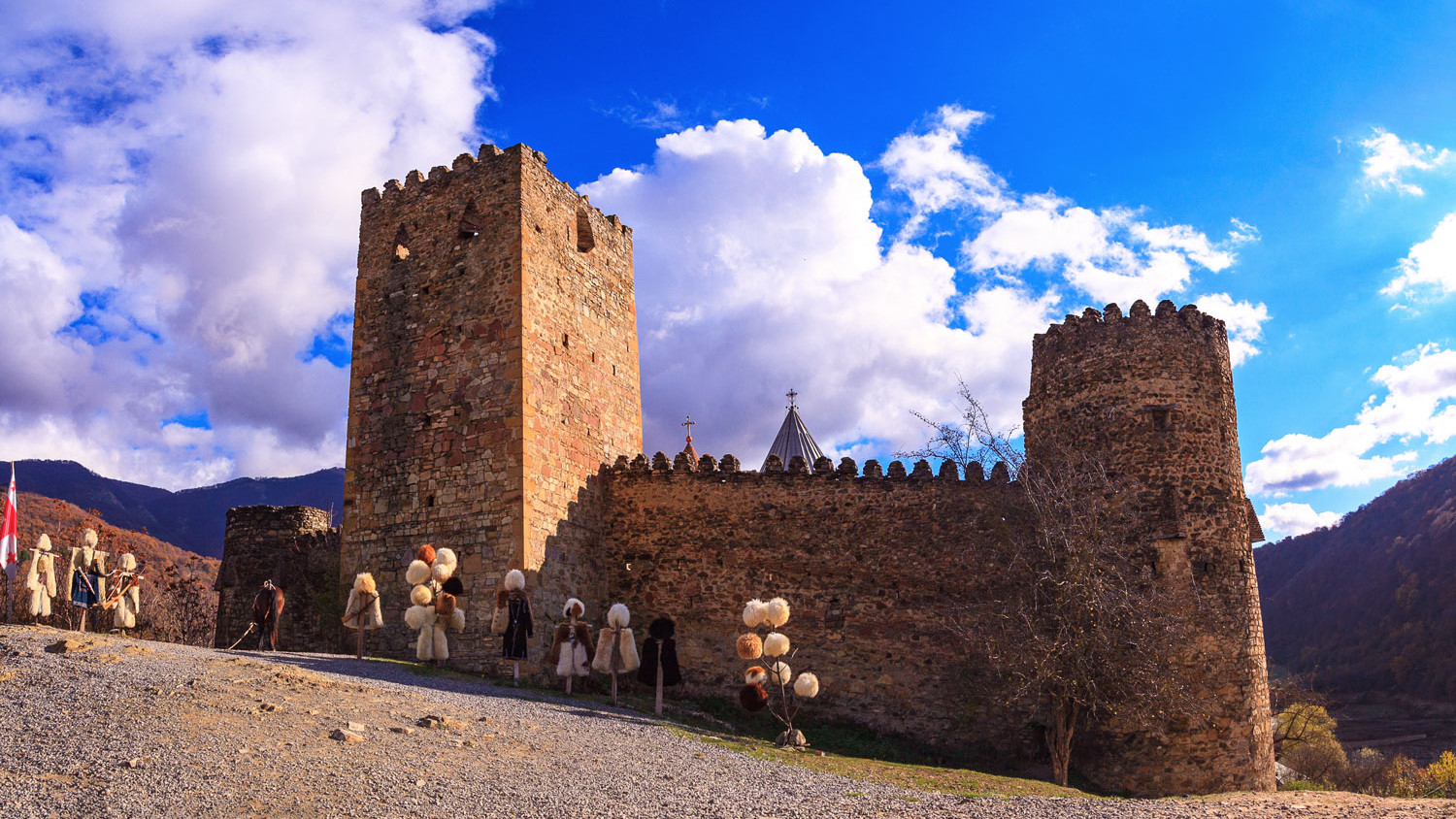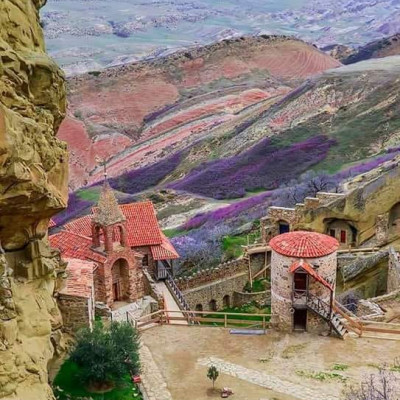
The turquoise sweep of Zhinvali Reservoir glinted below as I stepped through the stone gate of Ananuri Fortress, 74 km north of Tbilisi on the legendary Georgian Military Road. From this perch high above the Aragvi River, it was easy to see why medieval dukes chose the spot: every bend in the gorge lies in plain sight, and the mountain wind carries both echoes of merchants’ bells and clangs of past battles.
Ananuri is really two citadels stitched together. The lower fort—its round tower now a romantic ruin—guards the riverbank. Higher up stands Sheupovari, a square keep once reserved for a last-stand defense. I traced the worn stairway to the top; the view could silence even the hardiest traveler.
Inside the curtain walls, three very different churches tell the story of a feudal dynasty:
- Church of the Virgin (1689) – A single-dome basilica, its façades still bright with carved grapevines and warriors despite an 18th-century fire that erased the frescoes within.
- Church of the Deity (16th–17th c.) – Cross-domed and graceful, it shelters a rare stone baldaquin. Legend says a duke’s widow commissioned it so her husband’s soul would rest under sacred arches.
- Church “Mkurnali” (Healer) – Tiny and half outside the walls, this late-17th-century chapel once served travelers who paused to wash wounds in the Aragvi’s cold water before facing the high passes beyond.
Though muskets fell silent in the early 1800s, Ananuri’s stones still guard their secrets. In 2007 UNESCO placed the complex on its tentative World Heritage list, a first step toward global recognition. Until that seal arrives, the fortress keeps watch—granite, faith, and mountain light woven into one unforgettable stop on any journey through Georgia.






 Deutsch
Deutsch
 русский
русский
